- 联系我们
- duidaima.com 版权声明
- 闽ICP备2020021581号
-
 闽公网安备 35020302035485号
闽公网安备 35020302035485号
 闽公网安备 35020302035485号
闽公网安备 35020302035485号
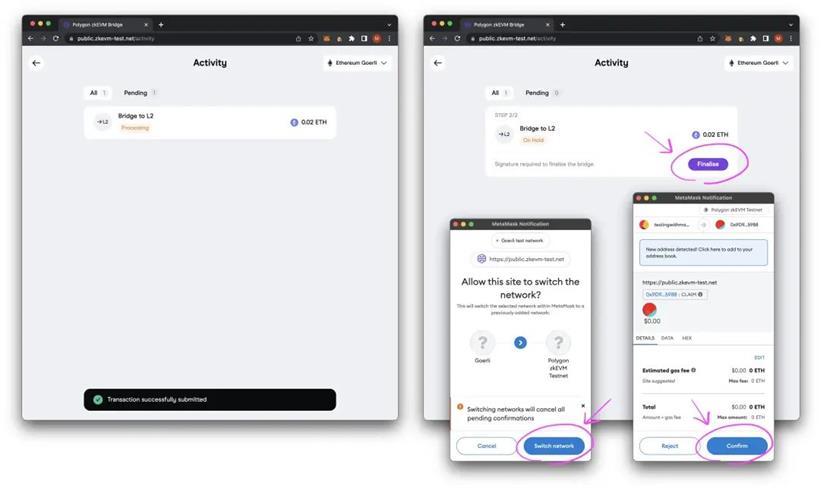


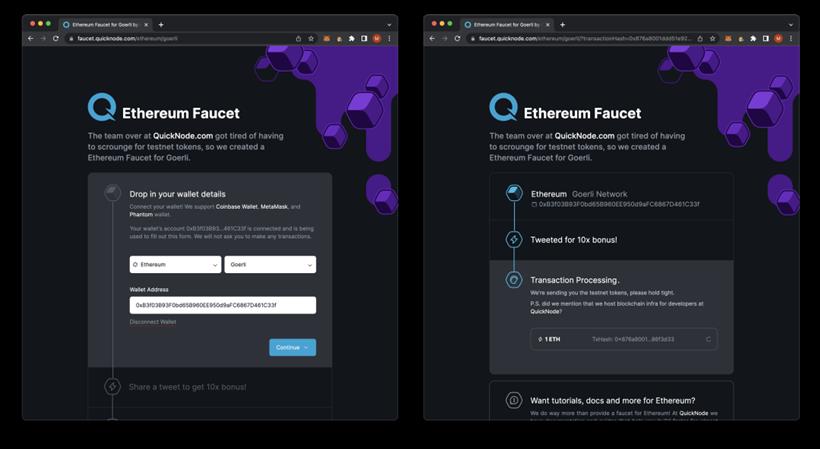



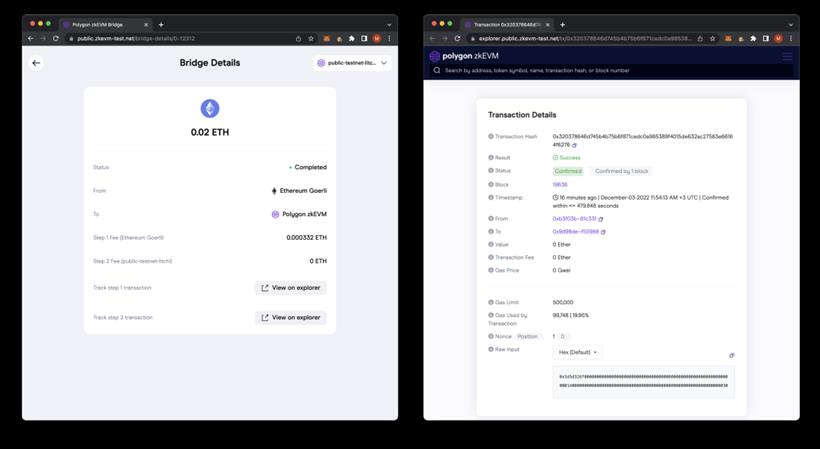
mkdir zkevm-erc20; cd zkevm-erc20; git init; pnpx hardhat; # Expected Prompts # 888 888 888 888 888 # 888 888 888 888 888 # 888 888 888 888 888 # 8888888888 8888b. 888d888 .d88888 88888b. 8888b. 888888 # 888 888 "88b 888P" d88" 888 888 "88b "88b 888 # 888 888 .d888888 888 888 888 888 888 .d888888 888 # 888 888 888 888 888 Y88b 888 888 888 888 888 Y88b. # 888 888 "Y888888 888 "Y88888 888 888 "Y888888 "Y888 # # 👷 Welcome to Hardhat v2.12.3 👷 # # ? What do you want to do? … # Create a JavaScript project # ❯ Create a TypeScript project # Create an empty hardhat.config.js # Quit # ? Hardhat project root: › /path/to/zkevm-erc20 # ? Do you want to add a .gitignore? (Y/n) › y # ? Do you want to install this sample project's dependencies with npm (@nomicfoundation/hardhat-toolbox)? (Y/n) › y pnpm install;让我们通过运行一个节点,部署默认的合约,然后测试该合约,来仔细检查我们的 Hardhat 设置是否按预期工作。
# 堆代码 www.duidaima.com # FROM: ./zkevm-erc20 ./node_modules/.bin/hardhat node; # Expected Output: # Started HTTP and WebSocket JSON-RPC server at http://127.0.0.1:8545/ # # Accounts # ======== # # WARNING: These accounts, and their private keys, are publicly known. # Any funds sent to them on Mainnet or any other live network WILL BE LOST. # ...在终端 2
# FROM: ./zkevm-erc20 ./node_modules/.bin/hardhat run scripts/deploy.ts # Expected Output: # Compiled 1 Solidity file successfully # Lock with 1 ETH and unlock timestamp 1701595951 deployed to 0x5FbDB2315678afecb367f032d93F642f64180aa3运行由原始脚手架项目生成的测试:
# FROM: ./zkevm-erc20 ./node_modules/.bin/hardhat test; # Expected Output: # Lock # Deployment # ✔ Should set the right unlockTime (894ms) # ✔ Should set the right owner # ✔ Should receive and store the funds to lock # ✔ Should fail if the unlockTime is not in the future # Withdrawals # Validations # ✔ Should revert with the right error if called too soon # ✔ Should revert with the right error if called from another account # ✔ Shouldn't fail if the unlockTime has arrived and the owner calls it # Events # ✔ Should emit an event on withdrawals # Transfers # ✔ Should transfer the funds to the owner # # 9 passing (1s)
# FROM: ./zkevm-erc20 pnpm add -D @openzeppelin/contracts;配置 ERC20使用_OpenZepplin Wizard/_[12]来配置 ERC20 代币:
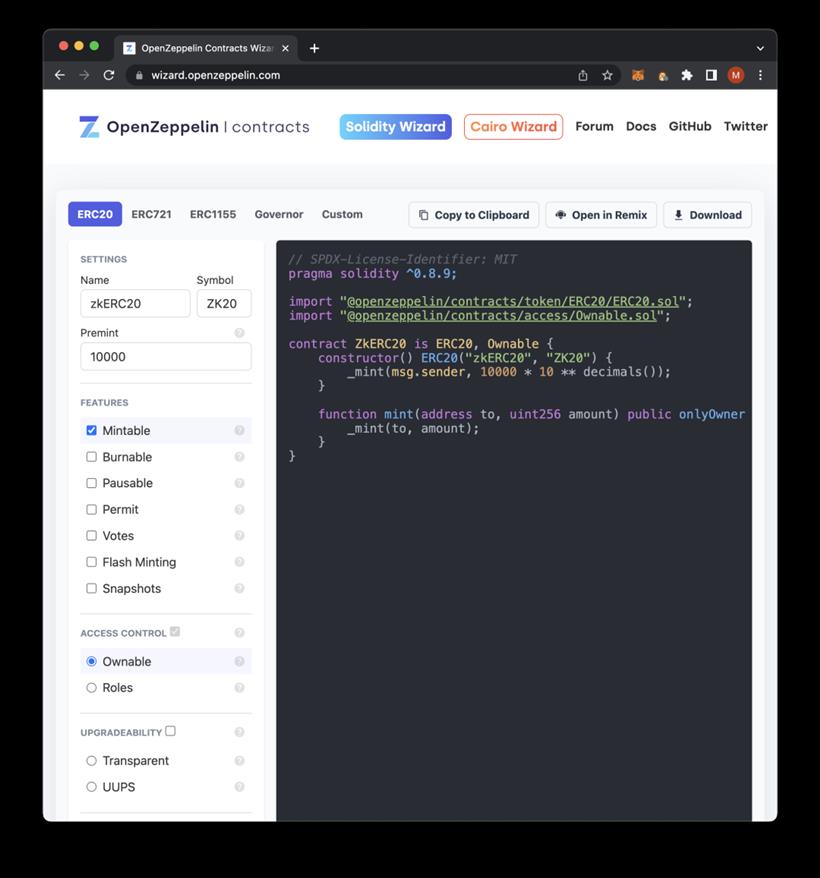
# FROM: ./zkevm-erc20
mv ./contracts/Lock.sol ./contracts/zkERC20.sol;
文件: ./contracts/zkERC20.sol:
// SPDX-License-Identifier: MIT
pragma solidity ^0.8.9;
import "@openzeppelin/contracts/token/ERC20/ERC20.sol";
import "@openzeppelin/contracts/access/Ownable.sol";
contract ZkERC20 is ERC20, Ownable {
constructor() ERC20("zkERC20", "ZK20") {
_mint(msg.sender, 10000 * 10 ** decimals());
}
function mint(address to, uint256 amount) public onlyOwner {
_mint(to, amount);
}
}
测试 ERC20 合约// Imports
// =====堆代码 www.duidaima.com =================================
import { ethers } from "hardhat";
// Main Deployment Script
// ========================================================
async function main() {
// Make sure in the contract factory that it mateches the contract name in the solidity file
// Ex: contract ZkERC20
const zkERC20Contract = await ethers.getContractFactory("ZkERC20");
const contract = await zkERC20Contract.deploy();
await contract.deployed();
console.log(`ZkERC20 deployed to ${contract.address}`);
};
// Init
// ========================================================
// We recommend this pattern to be able to use async/await everywhere
// and properly handle errors.
main().catch((error) => {
console.error(error);
process.exitCode = 1;
});
# FROM: ./zkevm-erc20
mv ./test/Lock.ts ./test/zkERC20.test.ts;
文件: ./test/zkERC20.test.ts:
// Imports
// ==========堆代码 www.duidaima.com ============================
import { loadFixture } from "@nomicfoundation/hardhat-network-helpers";
import { expect } from "chai";
import { ethers } from "hardhat";
// Tests
// ========================================================
describe("zkERC20", function () {
// We define a fixture to reuse the same setup in every test.
// We use loadFixture to run this setup once, snapshot that state,
// and reset Hardhat Network to that snapshot in every test.
async function deployZkERC20() {
// Contracts are deployed using the first signer/account by default
const [owner, otherAccount] = await ethers.getSigners();
// Make sure in the contract factory that it mateches the contract name in the solidity file
// Ex: contract ZkERC20
const zkERC20Contract = await ethers.getContractFactory("ZkERC20");
const zkERC20 = await zkERC20Contract.deploy();
return { zkERC20, owner, otherAccount };
};
/**
*
*/
describe("Deployment", function () {
/**
*
*/
it("Should deploy with initial 10,000 supply", async function () {
// Setup
const { zkERC20 } = await loadFixture(deployZkERC20);
// Init + Test
expect(await zkERC20.totalSupply()).to.equal(ethers.utils.parseEther(`10000`).toString());
});
});
/**
*
*/
describe("Minting", function () {
/**
*
*/
it("Should mint and increase the supply by 137", async function () {
// Setup
const { zkERC20, owner } = await loadFixture(deployZkERC20);
// Init
await zkERC20.connect(owner).mint(owner.address, ethers.utils.parseUnits('137', 18));
// Init + Test
expect(await zkERC20.totalSupply()).to.equal(ethers.utils.parseEther(`10137`).toString());
});
});
});
让我们运行 Hardhat 节点并测试这个合约。# FROM: ./zkevm-erc20 ./node_modules/.bin/hardhat node; # Expected Output: # Started HTTP and WebSocket JSON-RPC server at http://127.0.0.1:8545/ # # Accounts # ======== # # WARNING: These accounts, and their private keys, are publicly known. # Any funds sent to them on Mainnet or any other live network WILL BE LOST. # ...
# FROM: ./zkevm-erc20 ./node_modules/.bin/hardhat test; # Expected Output: # zkERC20 # Deployment # ✔ Should deploy with initial 10,000 supply (803ms) # Minting # ✔ Should mint and increase the supply by 137 # # 2 passing (819ms)
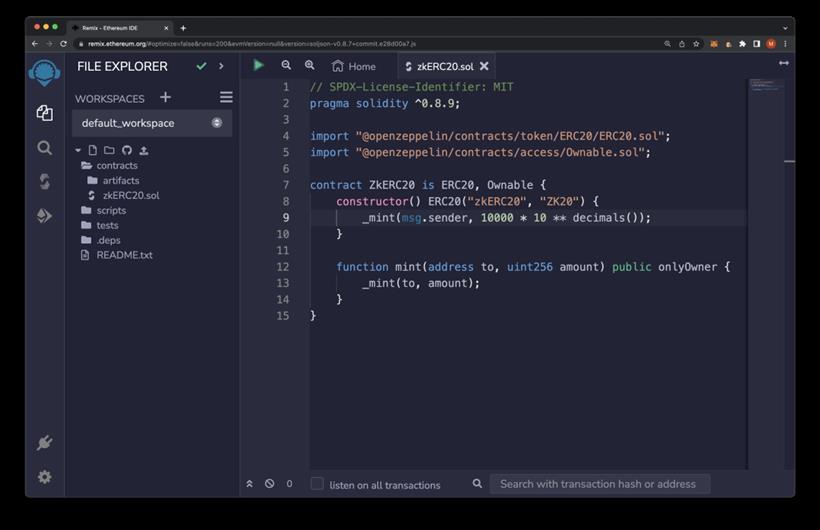
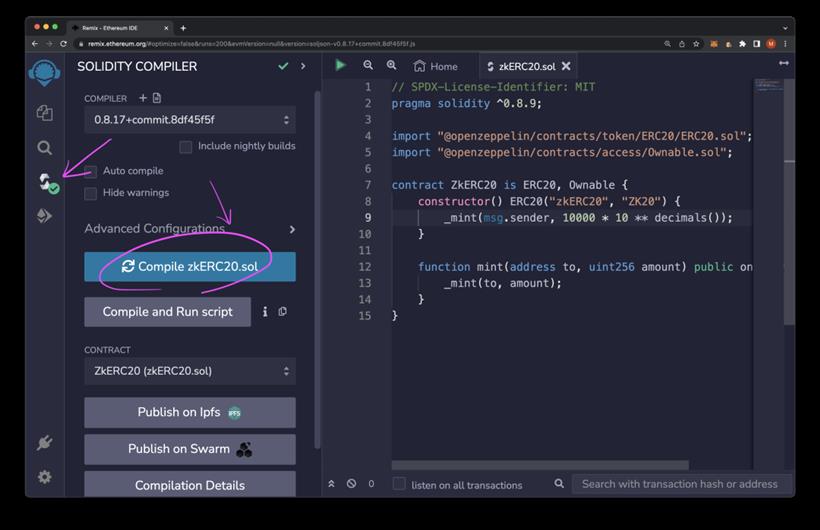
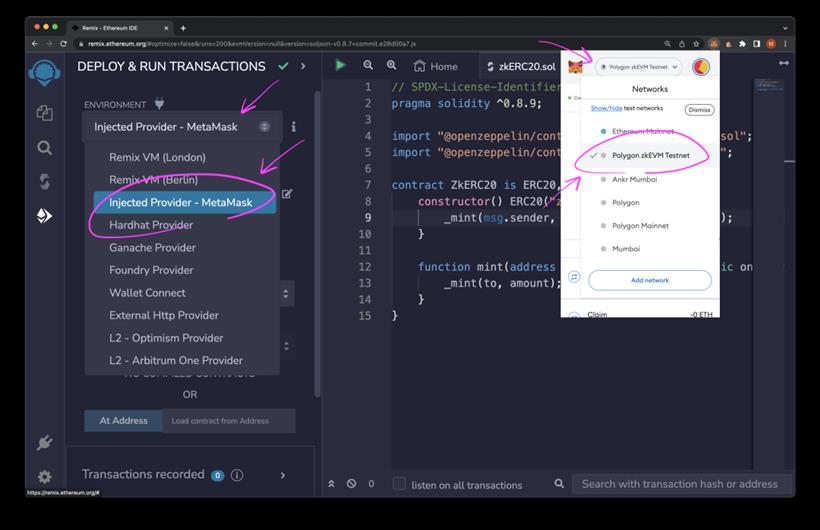

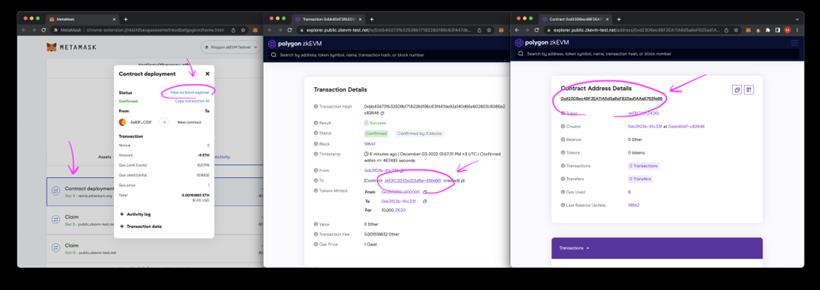
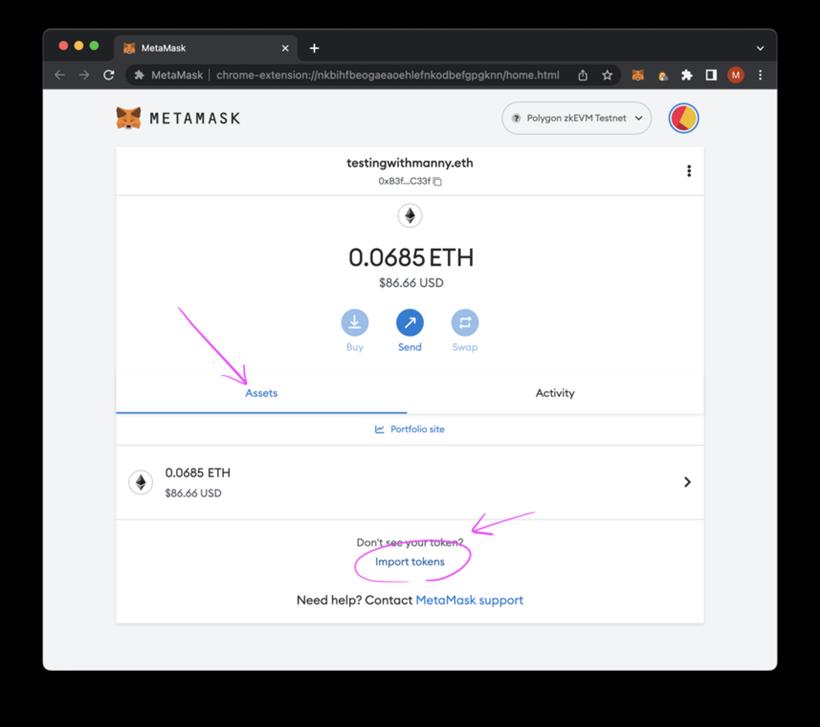
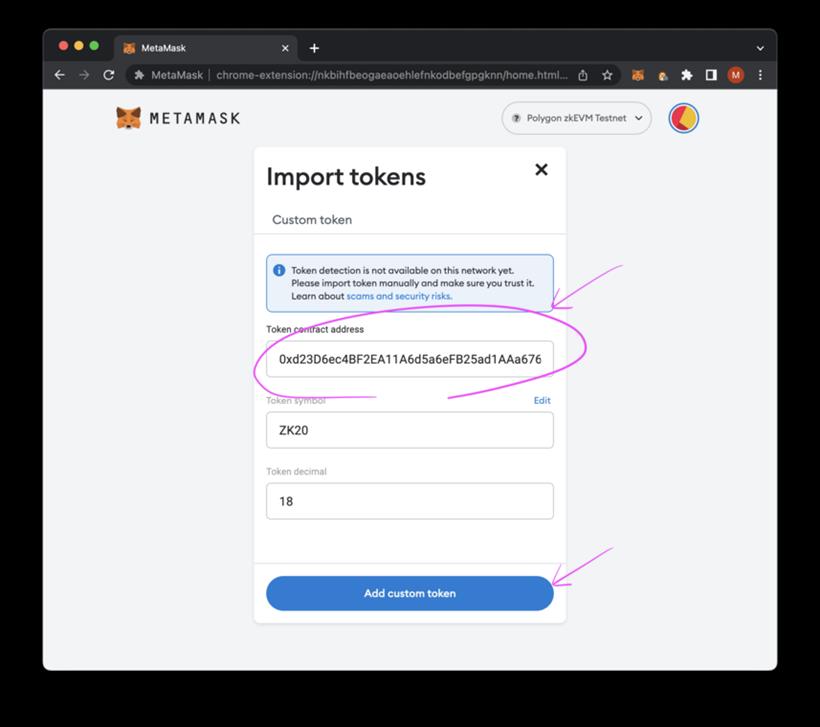

你已经完全部署了一个 ERC20 合约到 Polygon Hermes zkEVM 测试网上。
参考资料
[1]登链翻译计划: https://github.com/lbc-team/Pioneer
[2]翻译小组: https://learnblockchain.cn/people/412
[3]Tiny 熊: https://learnblockchain.cn/people/15
[4]Vitalik 博客:不同类型的 ZK-EVMs: https://vitalik.eth.limo/general/2022/08/04/zkevm.html
[5]状态树: https://medium.com/@eiki1212/ethereum-state-tree-architecture-explained-a30237009d4e
[6]Polygon Wiki For zkEVM: https://wiki.polygon.technology/docs/zkEVM/develop
[7]https://rpc.public.zkevm-test.net: https://rpc.public.zkevm-test.net/
[8]https://explorer.public.zkevm-test.net: https://explorer.public.zkevm-test.net/
[9]QuickNode Goerli Testnet Faucet: https://faucet.quicknode.com/ethereum/goerli
[10]AlchemyGoerli Testnet Faucet: https://goerlifaucet.com/
[11]https://public.zkevm-test.net/: https://public.zkevm-test.net/
[12]OpenZepplin Wizard/: https://wizard.openzeppelin.com/
[13]以太坊 Remix: https://remix.ethereum.org/
[14]GitHub - codingwithmanny/zkevm-erc20: https://github.com/codingwithmanny/zkevm-erc20
[15]@登链社区: https://twitter.com/NUpchain